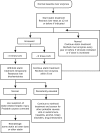Statins in the treatment of dyslipidemia in the presence of elevated liver aminotransferase levels: a therapeutic dilemma
- PMID: 20360293
- PMCID: PMC2848423
- DOI: 10.4065/mcp.2009.0365
Statins in the treatment of dyslipidemia in the presence of elevated liver aminotransferase levels: a therapeutic dilemma
Abstract
The beneficial role of statins in primary and secondary prevention of coronary heart disease has resulted in their frequent use in clinical practice. However, safety concerns, especially regarding hepatotoxicity, have driven multiple trials, which have demonstrated the low incidence of statin-related hepatic adverse effects. The most commonly reported hepatic adverse effect is the phenomenon known as transaminitis, in which liver enzyme levels are elevated in the absence of proven hepatotoxicity. This class effect is usually asymptomatic, reversible, and dose-related. However, the increasing incidence of chronic liver diseases, including nonalcoholic fatty liver disease and hepatitis C, has created a new challenge when initiating statin treatment in patients with high cardiovascular risk. These diseases result in abnormally high liver biochemistry values, discouraging statin use by clinicians, fostering treatment discontinuation, and leaving a large number of at-risk patients untreated. A PubMed/MEDLINE search of the literature regarding statin safety (January 1, 1994-December 31, 2008) was performed, using the following search terms: statin safety, statin-related hepatotoxicity, and chronic liver disease and statin use, as well as the specific names of different statins and different liver diseases. Relevant clinical trials, review articles, panel discussions, and guideline recommendations were selected. This review supports the use of statin treatment in patients with high cardiovascular risk whose elevated aminotransferase levels have no clinical relevance or are attributable to known stable chronic liver conditions. For each patient, the decision should be based on an individual assessment of risks and benefits.
Figures
Similar articles
-
3-hydroxyl-3-methylglutaryl coenzyme A reductase inhibitor use in chronic liver disease: a therapeutic controversy.J Clin Lipidol. 2011 Nov-Dec;5(6):450-9. doi: 10.1016/j.jacl.2011.06.013. Epub 2011 Jun 28. J Clin Lipidol. 2011. PMID: 22108148 Review.
-
Prescription of statins to dyslipidemic patients affected by liver diseases: a subtle balance between risks and benefits.Nutr Metab Cardiovasc Dis. 2004 Aug;14(4):215-24. doi: 10.1016/s0939-4753(04)80008-5. Nutr Metab Cardiovasc Dis. 2004. PMID: 15553600 Review.
-
A prospective study of hepatic safety of statins used in very elderly patients.BMC Geriatr. 2019 Dec 16;19(1):352. doi: 10.1186/s12877-019-1361-2. BMC Geriatr. 2019. PMID: 31842780 Free PMC article.
-
Safety of statin therapy in patients with preexisting liver disease.Pharmacotherapy. 2008 Apr;28(4):522-9. doi: 10.1592/phco.28.4.522. Pharmacotherapy. 2008. PMID: 18363535 Review.
-
Meta-analysis of drug-induced adverse events associated with intensive-dose statin therapy.Clin Ther. 2007 Feb;29(2):253-60. doi: 10.1016/j.clinthera.2007.02.008. Clin Ther. 2007. PMID: 17472818
Cited by
-
Key Roles of Inflammation in Atherosclerosis: Mediators Involved in Orchestrating the Inflammatory Response and Its Resolution in the Disease Along with Therapeutic Avenues Targeting Inflammation.Methods Mol Biol. 2022;2419:21-37. doi: 10.1007/978-1-0716-1924-7_2. Methods Mol Biol. 2022. PMID: 35237956
-
Statin associated hepatic adverse effects: a retrospective review from a regional hospital in sultanate of oman.Oman Med J. 2014 Sep;29(5):351-7. doi: 10.5001/omj.2014.93. Oman Med J. 2014. PMID: 25337312 Free PMC article.
-
[Diagnosis of and therapy for hepatocellular carcinoma].Z Gastroenterol. 2013 Nov;51(11):1269-326. doi: 10.1055/s-0033-1355841. Epub 2013 Nov 15. Z Gastroenterol. 2013. PMID: 24243572 Free PMC article.
-
Patient knowledge about disease self-management in cirrhosis.Am J Gastroenterol. 2013 Mar;108(3):302-5. doi: 10.1038/ajg.2012.214. Am J Gastroenterol. 2013. PMID: 23459041 Free PMC article.
-
Cardiovascular Risk Reduction in Metabolic Dysfunction-Associated Steatotic Liver Disease and Metabolic Dysfunction-Associated Steatohepatitis.Curr Cardiol Rep. 2025 Jan 18;27(1):28. doi: 10.1007/s11886-024-02185-5. Curr Cardiol Rep. 2025. PMID: 39826021 Free PMC article. Review.
References
-
- Centers for Disease Control and Prevention (CDC) Leading causes of death. FastStats Web site. http://www.cdc.gov/nchs/FASTATS/lcod.htm. http://www.cdc.gov/nchs/FASTATS/lcod.htm Accessed February 2, 2010.
-
- Grundy SM, Cleeman JI, Bairey CN, et al. Coordinating Committee of the National Cholesterol Education Program, Endorsed by the National Heart, Lung, and Blood Institute, American College of Cardiology Foundation, and American Heart Association Implications of recent clinical trials for the National Cholesterol Education Program Adult Treatment Panel III Guidelines [published correction appears in Circulation. 2004;110(6):763] Circulation 2004;110(2):227-239 - PubMed
-
- Expert Panel on Detection, Evaluation, and Treatment of High Blood Cholesterol in Adults Executive summary of the third report of the National Cholesterol Education Program (NCEP) Expert panel on Detection Evaluation and Treatment of High Blood Cholesterol in Adults (Adult Treatment Panel III). JAMA 2001;285(19):2486-2497 - PubMed
-
- Pedersen TR, Kieksus J, Berg K, et al. Scandinavian Simvastatin Survival Study Group Randomized trial of cholesterol lowering in 4444 patients with coronary heart disease: the Scandinavian Simvastatin Survival Study (4S). Lancet 1994;344(8934):1383-1389 - PubMed
-
- Stein EA. The power of statins: aggressive lipid lowering. Clin Cardiol. 2003;26(4)(suppl 3):III25-III31 - PubMed
Publication types
MeSH terms
Substances
LinkOut - more resources
Full Text Sources
Medical


